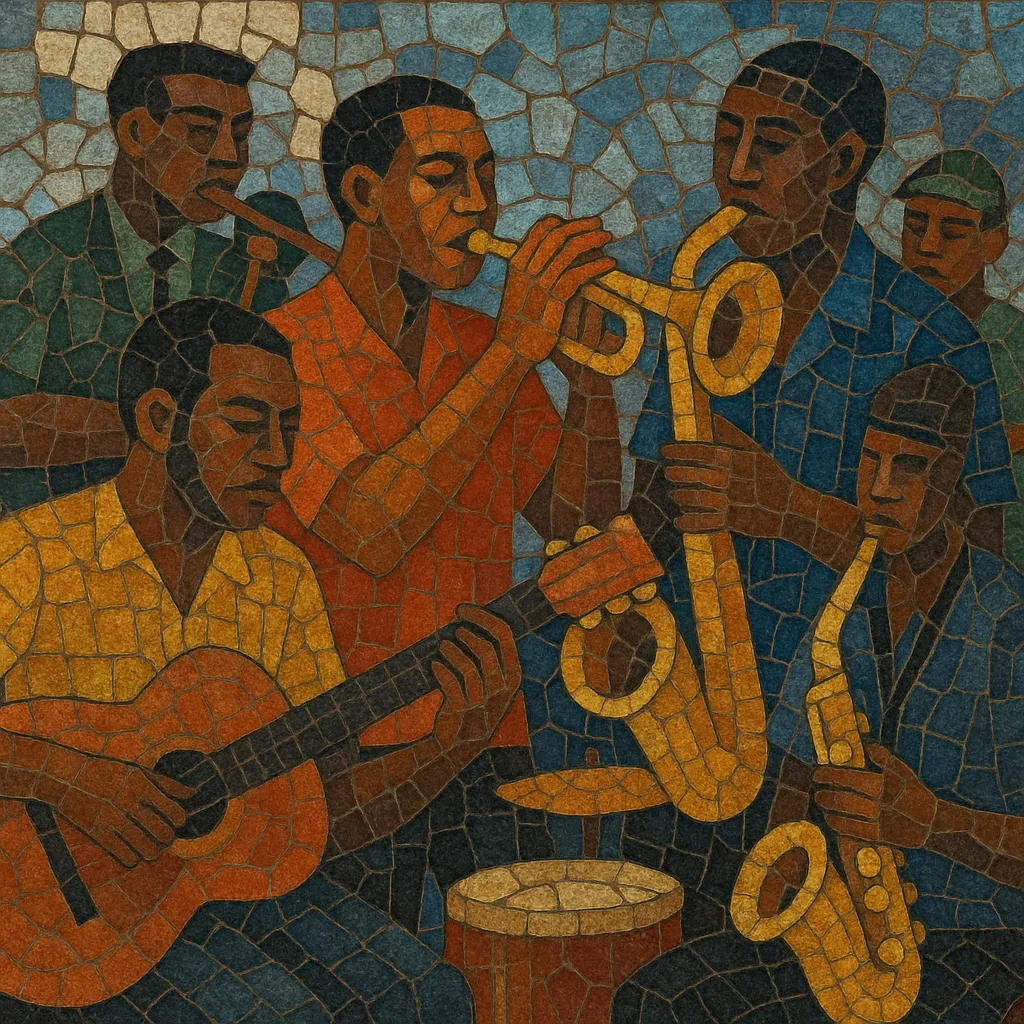Muziki wa dansi is Tanzania’s classic urban dance‑band tradition, often called "dansi" or "Swahili rumba." It blends Congolese rumba/soukous guitar lines with arranged horn sections, steady dance grooves, and call‑and‑response vocals sung in Swahili.
Typical ensembles feature multiple interlocking guitars, electric bass, drum kit augmented by hand percussion, and brass (trumpets, trombones, saxophones). Compared with faster, guitar-forward soukous, dansi favors mid‑tempo, melodically rich arrangements and clearly defined sections designed for the ballroom floor. Lyrics revolve around love, social life, and moral commentary, delivered with warmth and group refrains.
The genre flourished in Dar es Salaam’s dance halls from the 1960s through the 1980s, with bands cultivating distinctive mitindo (signature styles) and extended instrumental breaks to keep dancers moving.
Muziki wa dansi emerged in coastal Tanzania as local musicians absorbed Cuban and Congolese rumba via radio and records, then filtered those influences through Tanzanian urban club culture. Early dance bands in Dar es Salaam and the coast built orchestras with guitars, horns, and percussion, adopting the rumba’s cyclical grooves and call‑and‑response vocals while favoring more arranged, big‑band textures.
Following independence, parastatal institutions and unions sponsored bands, creating a thriving professional circuit. Groups such as NUTA/Juwata/OTTU Jazz (later Msondo Ngoma), DDC Mlimani Park Orchestra, Vijana Jazz, and Orchestra Maquis Original held residencies in dance halls and competed through mitindo—each band’s branded style and signature breaks. Tanzanian dansi consolidated its identity: mid‑tempo swing, interlocking guitars, tight horn voicings, long forms with instrumental “sebene”-like sections, and polished Swahili vocal arrangements.
Economic liberalization and the surge of faster Congolese ndombolo, together with new local styles (mchiriku, later singeli) and youth pop (eventually bongo flava), challenged the dance‑band economy. Many classic orchestras reduced activity, but dansi’s repertoire lives on through "zilizopendwa" (golden oldies) programming, reissues, and revival concerts. Its arranging language, guitar idioms, and communal dance aesthetics profoundly shaped later Tanzanian genres and remain a touchstone of Swahili coastal identity.
Use 2–3 electric guitars (lead, rhythm, and sometimes a second rhythm), electric bass, drum kit with added hand percussion (congas, shakers, cowbell), and a horn section (trumpets, trombone, sax). Group and backing vocals are essential for call‑and‑response.
Aim for mid‑tempo danceability (roughly 90–120 BPM). Keep a steady, lightly swinging feel with the drum kit marking a consistent pulse; interlock conga patterns for momentum. Guitars should play cyclic, interweaving ostinatos, leaving space for the bass to provide a buoyant, singing foundation. Plan an extended instrumental break (akin to a sebene) to lift dancers.
Favor accessible progressions (often I–IV–V with occasional ii or vi) and melodic horn lines that answer or double vocals. Guitar melodies should be lyrical and intertwined, avoiding dense distortion; clean tones with light chorus or spring reverb suit the style. Arrange horns in tight, parallel voicings that punctuate phrases and lead transitions.
Structure songs with an intro, verse/chorus cycles, a middle instrumental build, and a long dance section. Write clear sectional cues and signature mitindo elements (short arranged breaks, shout tags, or rhythmic hits) that brand the band’s identity. Keep textures transparent: alternate full‑band passages with sparser guitar‑percussion interludes to create dynamic flow.
Compose in Swahili where possible, focusing on love, everyday life, social etiquette, and moral lessons. Use call‑and‑response choruses to engage dancers. Lead vocals should be warm and narrative, with backing parts providing simple, catchy refrains.
Record live rhythm section takes to capture the communal feel. Pan interlocking guitars for width, place horns slightly forward for hook definition, and keep percussion crisp. Avoid excessive compression—let the groove breathe so dancers can feel the micro‑push/pull.


